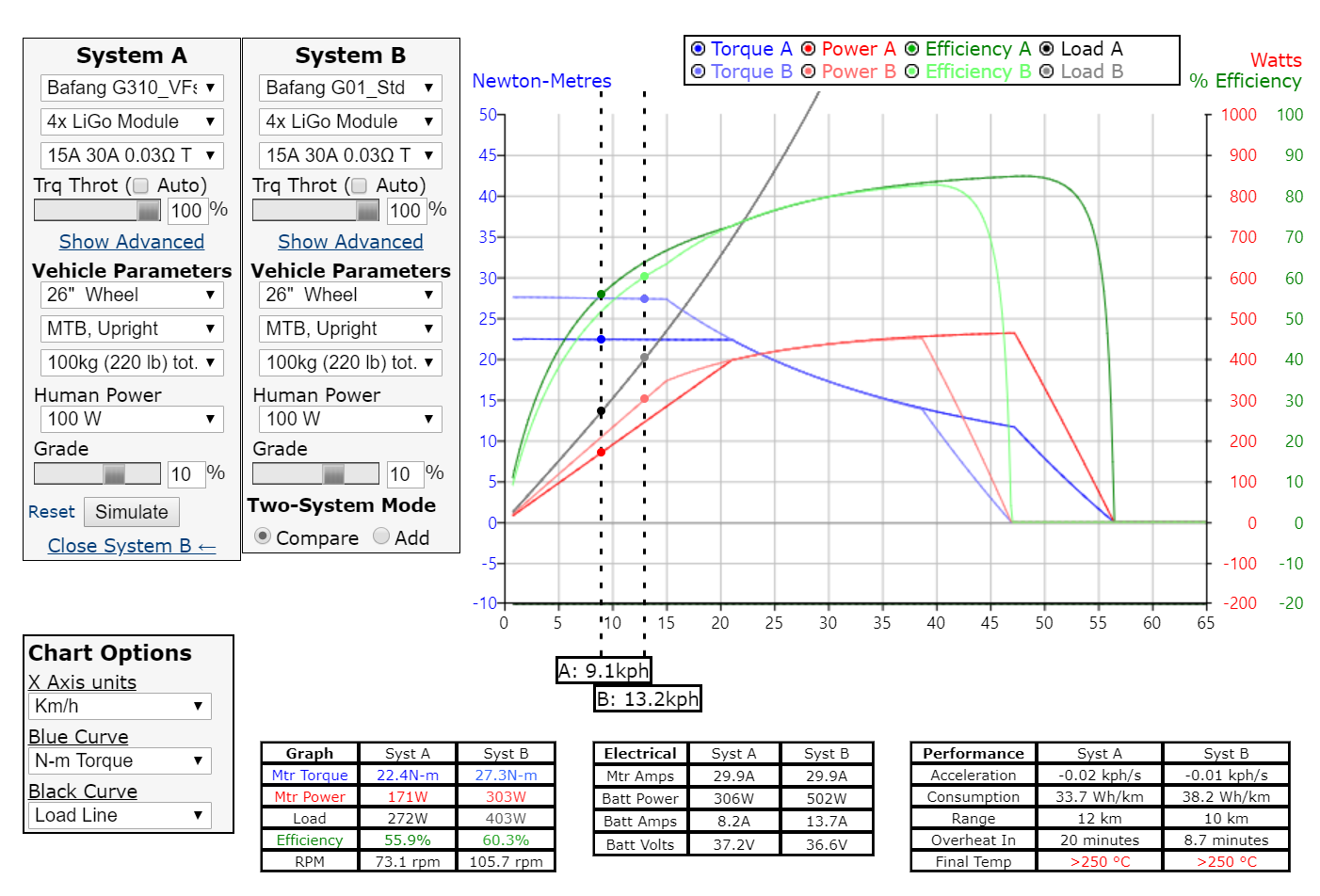Ford Prefect
1 W
Hello ES,
I've been reading here immensely, wrote a few short answers, and planned my first ebike.
I can't find the information I am looking for. Maybe I haven't searched for the right terms.
I am looking for suggestions for a motor for a tow truck. On most of my ways I can sustain a cruising speed of 27kph to 32kph. Not so in my home town: I live in Germany in a rather hilly area. 10% for 5km is an actual road sign on my way home. I can do this. But at 10pm this is really hideous. With my trailer and my two kids this is the exact opposite of fun.
conditions:
rear hub. I rode my wife's mid drive. Don't like it.
250W: typical is 15A @ 36V. You get away with 18A @ 36V. I guess 12A @ 48V is legal, too.
Top speed between 20kph and 30kph.
10sp cassette, Disc brake, 135mm width, 4kg max
So. Now is question time:
1.) Is a hub at this power level on these hills actually a good idea? Should I reconsider a mid drive?
2.) Is there a difference between a 12T MAC @ 48V, 12A and a 10T MAC @ 36V, 15A? I think I'm missing something here.
3.) Are there any Direct Drives to fulfill my ideas? Is this a valid consideration for 250W?
4.) Is there a performance difference between a heavy motor and a light motor (let's say an MAC and a Q100C) if the setup is as identical as possible (same top speed, same voltage, same current)?
Thanks in advance!
Ford
I've been reading here immensely, wrote a few short answers, and planned my first ebike.
I can't find the information I am looking for. Maybe I haven't searched for the right terms.
I am looking for suggestions for a motor for a tow truck. On most of my ways I can sustain a cruising speed of 27kph to 32kph. Not so in my home town: I live in Germany in a rather hilly area. 10% for 5km is an actual road sign on my way home. I can do this. But at 10pm this is really hideous. With my trailer and my two kids this is the exact opposite of fun.
conditions:
rear hub. I rode my wife's mid drive. Don't like it.
250W: typical is 15A @ 36V. You get away with 18A @ 36V. I guess 12A @ 48V is legal, too.
Top speed between 20kph and 30kph.
10sp cassette, Disc brake, 135mm width, 4kg max
So. Now is question time:
1.) Is a hub at this power level on these hills actually a good idea? Should I reconsider a mid drive?
2.) Is there a difference between a 12T MAC @ 48V, 12A and a 10T MAC @ 36V, 15A? I think I'm missing something here.
3.) Are there any Direct Drives to fulfill my ideas? Is this a valid consideration for 250W?
4.) Is there a performance difference between a heavy motor and a light motor (let's say an MAC and a Q100C) if the setup is as identical as possible (same top speed, same voltage, same current)?
Thanks in advance!
Ford


